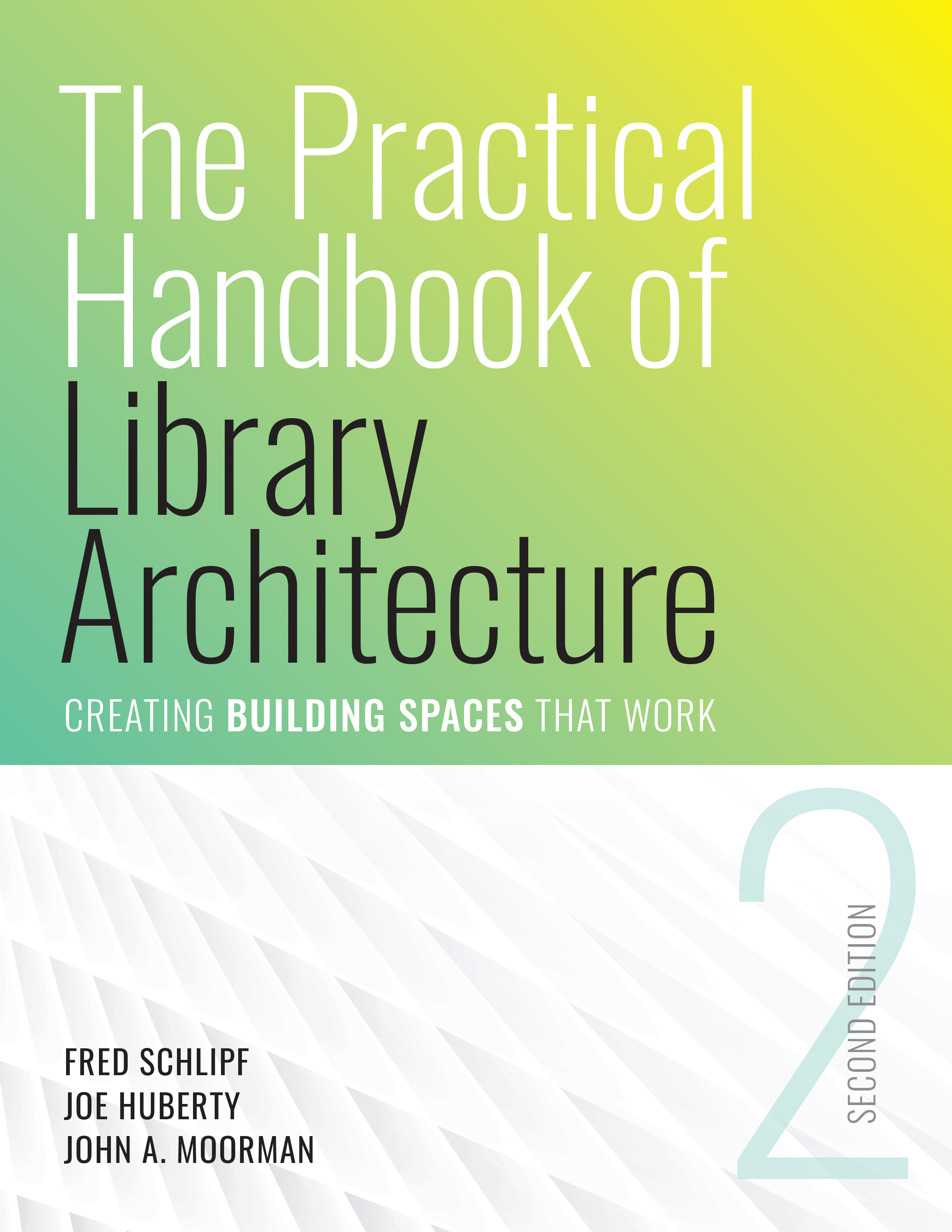Essential Collaboration in Library Architecture
a guest post by Fred Schlipf and Joe Huberty
The construction of library buildings is one of most expensive and permanent undertakings facing libraries. If you buy an ill-considered book, it can be dumped into the next book sale. An uncomfortable chair you never tried out before ordering can be put in the staff lunchroom. But a badly conceived building can be around for a century, leading to miseries for endless users and staff members yet unborn—or amazingly expensive (if not impossible) remodeling.
One of the things that leads to unsatisfactory library buildings is the failure of all the groups involved to work smoothly together. There are more groups than one might first think:
- Owners, including universities, cities, schools, and corporations.
- Users, including people who borrow materials, work or study in libraries, depend on libraries for assistance, spend time in libraries, attend events in libraries, and have coffee in libraries while watching the world go by. And people who don’t use libraries, sometimes for very relevant reasons.
- Librarians, including local library managers, library staff, and hired experts on library building functionality. If none of the library staff have experience with library building planning, a librarian with a background in library building planning needs to be hired and participate in the process.
- Architects and all the specialists who work with them, including engineers, interior planners, and landscapers. While architects with no experience with libraries can design very workable buildings, the chances of success are vastly greater if the architects have prior and successful experience constructing library buildings that owners and librarians can visit before selecting architects.
- Donors, including library foundations, library friends groups, and individual donors, all of whom may accompany their gifts with strong opinions. On occasion, donor opinions are totally unworkable, pointing to the wisdom of designing first and finding a donor second.
- Administrators, including university boards of trustees, university administrations, faculty library committees, city councils, mayors, public library boards, school boards, and school administrators.
- Technical experts, including campus architects, university and city planning staff, city technical staff, and code enforcement specialists, all of whom play a crucial role in defining what types of buildings can be built where and how.
- Fundraising experts, including university and city fundraising offices and library foundations.
 While all of these groups need to be consulted from time to time, others need to be present at all planning meetings.
While all of these groups need to be consulted from time to time, others need to be present at all planning meetings.
Among the absolutely essential groups who need to be present at all times are owners, architects, and librarians. One of the signs of disastrous library planning is the intentional omission of any of those three essential groups, especially the omission of librarians. If a provost or mayor or high school principal insists on meeting privately with the architect, expect serious problems.
How do libraries keep out of trouble?
- Never select architects without both the owners and the librarians present.
- Never make important decisions without owners, librarians, and architects present. In particular, beware of meetings without librarians present. (When people announce that the next meeting won’t need librarians present, librarians need to be sure to attend.)
- Making decisions without all three groups present leads to a lot of wasted time getting all three groups together later. Or it can lead to the omission of essential input from one of the groups, which sometimes results in serious design mistakes.
- Beware of people with axes to grind. Often these involve money. Owners of obsolete buildings may hope to unload them on their local public libraries. People may decide to combine different types of libraries that have nothing in common with each other, in the hope this will save money, ignoring a wide variety of basic planning issues in the process. Or they can combine library buildings with non-library buildings, failing to separate the two functions and leading to problems with security, acoustics, and other basic necessities.
- Be aware of owners’ motivations, which may have more to do with saving money or improving a bad area of town or campus than providing library service. Some concepts appear to be driven only by visions of bargains rather than by visions of fine libraries.
- Beware of proposed designs that excite the designers but nobody else.
- Never let an architect initially propose a single idea. Ideas need to emerge through discussion, not be revealed in a sudden blaze of glory.
- Beware of librarians who demand everything every staff member requests, regardless of cost.
- Site selection is always a group process. Never let a non-library agency dictate your site without discussion of functional needs by librarians, library users, and architects.
- The unworkability of ideas can be made clear by simple architectural sketches and accompanying cost estimates. If you don’t test ideas this way, some people will never abandon them.
- Avoid situations where team members can be intimidated. Librarians are the most vulnerable team members, and it can help to have an outside library specialist there to speak up and then be dismissed in revenge for offending the mayor or the provost.
- Always strenuously ban all situations where new ideas are sprung on people at a meeting with a requirement for instant action.
The design and construction of library buildings is far more complex than many people realize. It involves a seemingly endless consideration of hundreds of details rather than a handful of sweeping rules. Librarians need to be aware of what works—and doesn’t work—before embarking on projects. And they need to be alert to protecting their libraries’ interests.
Collaboration is an essential approach to successful library buildings.
Learn more at the ALA Store.
